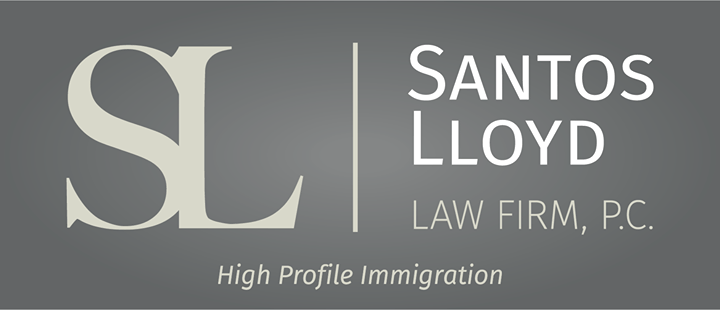Comment éviter l'abandon du statut de Resident permanent legal (LPR)

Click here to read this article in English
Maintenant, vous voulez rendre visite à votre famille à l'étranger, mais le COVID, ou un autre événement, est arrivé, et votre mère est tombée malade. Après tout cela, vous aviez juste besoin de vacances reposantes sur une plage au Portugal, et ce qui devait être un voyage de deux semaines s'est transformé en un séjour de huit mois. Les agents de la patrouille frontalière américaine risquent-ils de penser que vous avez renoncé à votre statut de résident permanent légal (RPL) ? Si c'est le cas, que faire ? Comment pouvez-vous passer une période prolongée en dehors des États-Unis sans renoncer à votre statut ? Poursuivez votre lecture pour le savoir.
Il n'y a pas de période fixe qui déclenche l'abandon, mais les LPR sont considérés comme cherchant à être réadmis s'ils ont été absents des États-Unis pendant une période continue de plus de 180 jours. INA § 101(a)(13)(C)(ii). Bien qu'un LPR revenant d'une visite de plus de 180 jours soit soumis aux motifs d'inadmissibilité et puisse être interrogé sur un éventuel abandon de résidence, cette question ne se pose généralement que lorsque le LPR est parti depuis plus d'un an.
Lorsqu'un LPR est resté à l'étranger de manière continue pendant plus d'un an, la présomption est qu'il y a eu abandon. 8 CFR § 211.1(a)(2). Mais cette présomption peut être levée si le LPR prouve qu'il a maintenu des liens suffisants avec les États-Unis et qu'il n'a jamais eu l'intention d'abandonner sa résidence. Si vous constatez que vous avez été en dehors des États-Unis pendant plus d'un an, il est recommandé de demander un permis de retour. Ce permis établit que vous n'aviez pas l'intention d'abandonner votre statut et vous permet de demander l'admission aux États-Unis après un voyage à l'étranger d'une durée maximale de deux ans sans avoir à obtenir un visa de retour. Les permis de retour sont normalement valables pendant deux ans à compter de la date de délivrance. Pour obtenir un permis de rentrée, vous devez remplir le formulaire I-131, Application for Travel Document (demande de document de voyage). Dans la mesure du possible, vous devez déposer cette demande bien avant la date prévue de votre voyage. En outre, vous ne pouvez pas déposer de formulaire I-131 pour obtenir un permis de retour si vous n'êtes pas physiquement présent aux États-Unis au moment où vous déposez le formulaire. Vous devez également faire prendre vos empreintes biométriques avant de quitter les États-Unis ; les empreintes biométriques ne peuvent pas être prises en dehors du pays. Toutefois, si vous déposez le formulaire I-131 et que vous prenez vos empreintes biométriques, vous pouvez quitter les États-Unis pendant que le formulaire I-131 est en cours d'examen et, s'il est approuvé, le document de voyage peut être envoyé à une ambassade des États-Unis à l'étranger pour que vous puissiez le récupérer dans le pays étranger. Vous n'avez pas besoin d'un permis de rentrée si vous restez moins d'un an en dehors des États-Unis.
Si vous n'avez pas de permis de retour aux États-Unis après une longue période d'absence, vous pouvez faire valoir que vous n'avez pas abandonné votre statut et présenter des preuves à l'agent de la patrouille frontalière au point d'entrée aux États-Unis pour étayer votre argument. Les preuves attestant que vous avez conservé votre statut pendant votre absence comprennent, sans s'y limiter, la preuve d'une incapacité médicale, le décès d'un membre de la famille, le paiement d'une hypothèque sur une maison américaine, un emploi dans une entreprise américaine à l'étranger, un permis de conduire délivré au cours de l'année écoulée et indiquant la même adresse que celle figurant sur le formulaire I-94, registre des arrivées et des départs, le nom et l'adresse de l'employeur américain et la preuve qu'un salaire a été versé à l'entreprise américaine à l'étranger. Le nom et l'adresse de l'employeur américain et la preuve qu'un salaire a été versé dans un délai raisonnable ; la preuve de l'inscription des enfants dans une école américaine ; la preuve que le séjour prolongé à l'étranger a été causé par des circonstances imprévues ; la preuve d'une date de fin de voyage prédéterminée, telle que l'obtention d'un diplôme ou l'expiration d'un contrat de travail ; la preuve d'avoir rempli une (des) déclaration(s) de revenus américaine(s) pour la (les) dernière(s) année(s) ; et la preuve de la propriété d'un bien, réel ou personnel, aux États-Unis. 9 FAM 42.22 N. 1.3.
Si vous n'êtes pas sûr d'avoir abandonné votre statut de LPR ou si vous souhaitez obtenir des conseils sur les voyages prolongés en dehors des États-Unis, veuillez contacter dès aujourd'hui l'un de nos avocats expérimentés!
Ce blog n'est pas destiné à fournir des conseils juridiques et rien ici ne doit être interprété comme établissant une relation avocat-client. Veuillez prendre rendez-vous avec un avocat spécialisé en droit de l'immigration avant d'agir sur la base de toute information lue ici.





